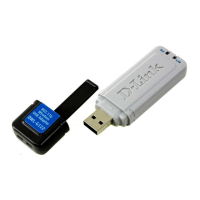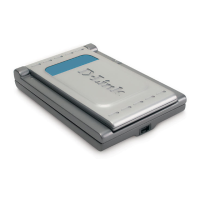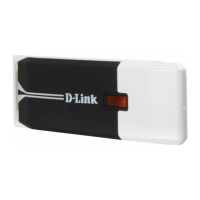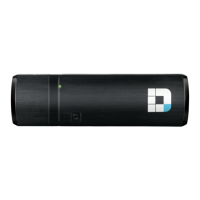Do you have a question about the D-Link DWL-G122 and is the answer not in the manual?
Lists items included in the product package.
Details the necessary hardware and software for the adapter.
Provides an overview of the DWL-G122 wireless USB adapter and its capabilities.
Highlights the key characteristics and advantages of the DWL-G122 adapter.
Describes the physical components and ports of the DWL-G122 adapter.
Initial steps and verification before installing the wireless adapter.
Instructions for uninstalling previous wireless adapter software.
Guide to disabling built-in or other wireless adapters to prevent conflicts.
Factors affecting wireless signal strength and placement for optimal performance.
Step-by-step guide for installing the DWL-G122 driver and software.
Introduction to the software for managing adapter settings.
How to view and connect to available wireless networks using the utility.
Detailed steps for connecting using WPS push button or PIN methods.
Managing saved wireless network profiles (create, edit, delete).
Instructions for manually creating a new wireless network profile.
How to edit existing wireless network profiles.
Accessing help and information within the connection manager utility.
Displays firmware and utility version information for the DWL-G122.
Using Windows Vista's built-in utility to connect.
Using Windows XP's built-in utility to connect.
Explains WPA security and its improvements over WEP.
Steps to set up WPA/WPA2 passphrase via the D-Link utility.
Steps to set up WPA/WPA2 passphrase using Windows Vista.
Steps to set up WPA/WPA2 passphrase using Windows XP.
Advanced configuration for WPA/WPA2 using a RADIUS server.
Steps to verify correct adapter installation.
Troubleshooting steps when the adapter is not detected by the computer.
Steps to resolve connection issues to the network or internet.
Explains wireless technology and its benefits.
Highlights D-Link's position and offerings in wireless networking.
Explains the principles of wireless communication.
Defines WLAN and its typical range.
Defines WPAN and its applications.
Discusses various user groups and scenarios for wireless technology.
Locations and environments where wireless technology is commonly deployed.
Explains Infrastructure and Ad-Hoc networking modes.
How to find the adapter's IP address using command prompt.
Steps to manually configure a static IP address for the adapter.
Lists the wireless and bus standards supported by the adapter.
Specifies the connection type and compatibility.
Details the security protocols supported by the adapter.
Covers frequency, power, modulation, voltage, temp, humidity.
Includes dimensions, weight, and certifications.
| Interface | USB |
|---|---|
| Wireless Standard | 802.11g |
| Frequency Band | 2.4 GHz |
| Security | WEP, WPA, WPA2 |
| Antenna | Internal |
| Device Type | Wireless Adapter |
| Form Factor | External |
| Connectivity Technology | Wireless |
| Data Link Protocol | IEEE 802.11b, IEEE 802.11g |
| Data Rates | 54 Mbps |
| Operating Systems Supported | Windows 98SE, ME, 2000, XP |











